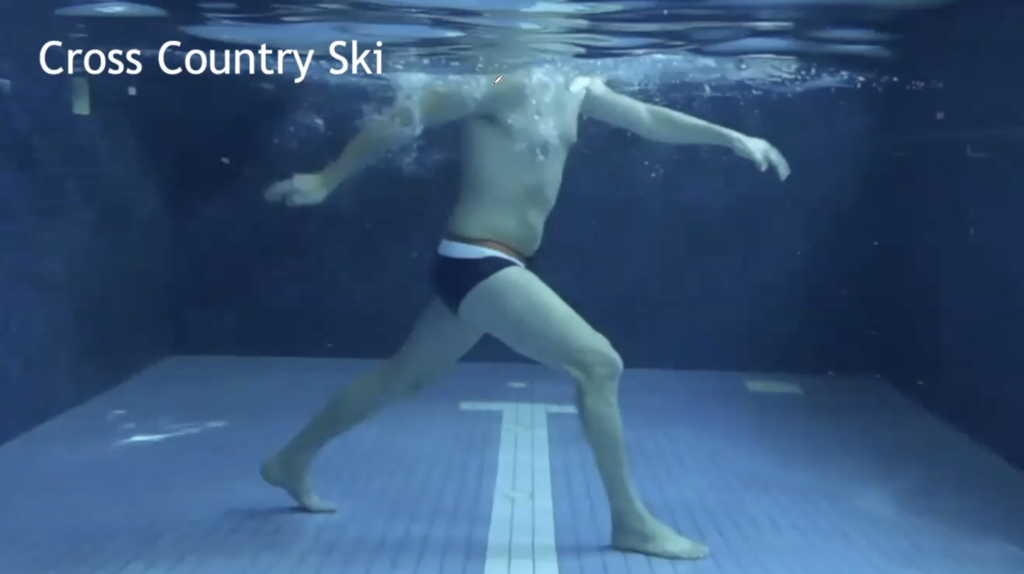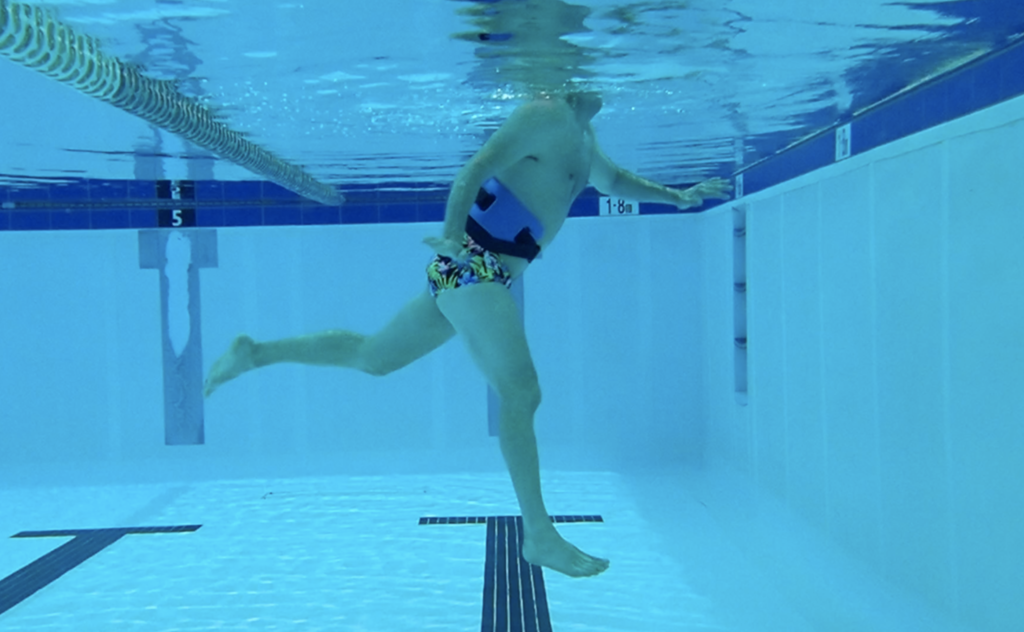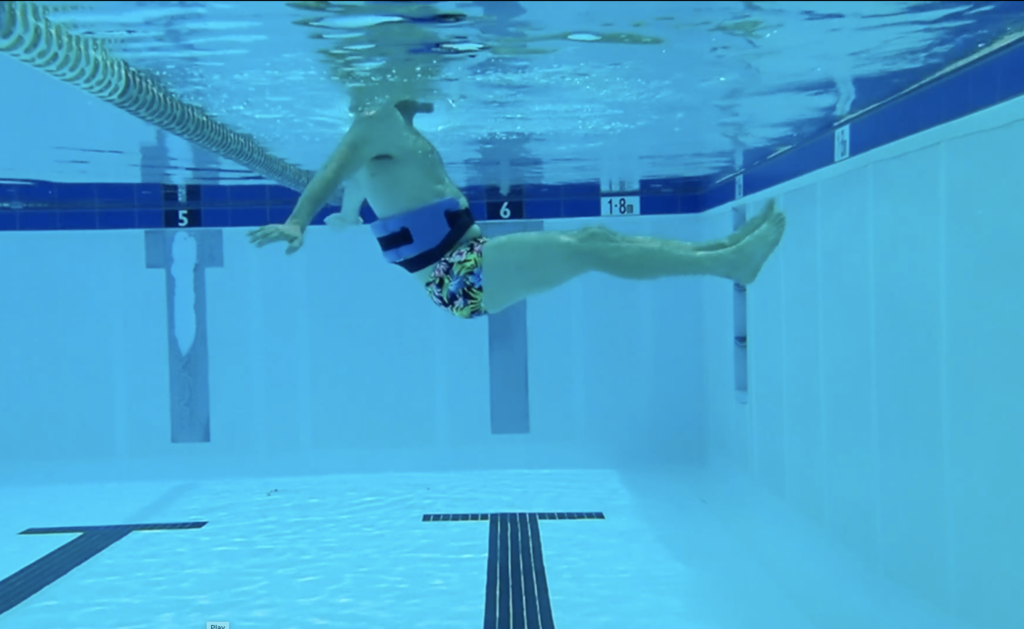The difference between a good aqua instructor and an expert one is the ability to share with participants additional insights and tips that will help them get the best out of their workout, writes aqua fitness specialist Dominic Gili.
Inspiration comes in many shapes and forms and often going back to basics is the most effective method to simplify class programming and re-engage clients.
Monitoring and correcting aqua fitness participants movement and technique in the water is vital to ensure instructors get the best possible outcomes for clients and offer safe and effective workouts to prevent injuries and re-injuries.
As aqua fitness instructors, it is important that we:
- understand how movement in water differs from movement on land
- prepare and implement safe and effective water workouts
- analyse client movement and modify when necessary
- correct technique to maximise workout benefits
- be aware of common contraindicated movements
- assess appropriate range of motion (ROM) for injury prevention
- offer suggestions to clients to help them get the best out of each and every water workout.
To achieve all of the above, instructors need to have a good understanding of biomechanics and hydrodynamics.
Biomechanics is the science of movement of the body, including how the muscles, bones, tendons, and ligaments work together to produce movement.
Hydrodynamics is the branch of science concerned with forces acting on, or exerted by, fluids.
Communicating to participants
In the eyes of our participants, the difference between a good and expert instructor is our ability to share knowledge that will help them clearly understand how to get the best out of each and every water workout.
Many of our clients are either new to the water or new to fitness altogether, and sometimes our greatest challenge is being able to communicate our know-how of water principles (so clients understand the effects of buoyancy and multi-directional resistance) and working within safe and effective intensity levels and range of motion.
It is also important to screen clients and offer alternatives for certain movements in order to avoid contraindicated (risky) exercises that may cause injury, including:
- improper body alignment
- locking of joints
- rapid, jerky and uncontrolled movements
- hyperextension
- overstretching
- excessive compression of structures.
Base move teaching tips
When using aqua fitness base moves, consider elevating your participants’ experience with the following teaching tips:
Cross Country Ski
- Working the opposite arms and legs has functional benefits as it engages the same muscles as walking or running
- Check suitable ROM – often clients will focus on their front ROM and not the working back behind the hip with arms or legs. Explain to clients that the hip is halfway for both arms and legs and that their goal is to move their limbs an equal distance from the hip in front and behind (as long as doing so doesn’t cause any shoulder or hip pain)
- Monitor clients to ensure they remain upright and tall through their torso. Remind those leaning forward to regain neutral alignment and reinforce the functional benefits of their movement on land.

Plyometric Scissor Kicks
- Starting and landing with feet together, this exercise is both a cardio challenge and a great exercise to engage the glutes and stretch the hip flexor
- Encourage clients to focus on the movement of the back leg, as well as abdominal, oblique and lower back muscles, to maintain good vertical alignment throughout
- Advise clients to work the water with sculling hands and bend the knees on landing to reduce impact.
Rocking Horse
- Advise clients to start by coordinating one leg kicking back while arms push forward, then the other leg kicking forward with arms pushing back
- Advise clients to lean forward when kicking back and lean back when kicking forward to work the abdominal and erector spinae muscles to keep the spine in good alignment
- Possible contraindicated movement is working with the arms and leg moving forward and back together, as it may lead to lower back hyperextension
- Consider varying the position of the hands or arm lines to engage different muscle groups.
Kicks – Front + Back
- Offer clients exercise variations by combining long and short lever movements
- Explain the benefits of the efficient ‘double concentric’ contraction for quads and hamstrings within the one workout, created by the multidirectional resistance of the water
- When working kicks front to back, consider two options for working the upper body: alternate arms forward and back, and double arms forward and back
- Advise clients of the benefits of each upper body workout option, with the alternate arm extension creating rotation to engage the obliques and help stretch the lower back
- Advise clients of the benefits of extending the leg back to stretch the hip flexor and engage the hamstrings and glutes, as well as directing the foot down towards the floor to avoid hyperextending the lower back.

Jog/Sprint/Tuck Jumps
- Advise clients to focus on the down phase to engage hamstrings and glutes
- Use a noodle to increase awareness of the targeted muscles.
Front Kicks
- Advise clients to focus on the down phase to engage hamstrings and glutes
- Reach back with the hands to engage the muscles in the mid-back, posterior deltoids and triceps
- Keep the legs in a safe ROM by lifting to a height just below the hip line.

Rock’n’Roll
- Advise clients to tuck the knees first and use sculling hands before rolling forward and back, to avoid hyperextending the lower back
- When rolling into the prone position, roll into a push-up or plank pose to also avoid hyperextending the lower back.
Mermaid
- Advise clients to tuck the knees into the chest first and push hips down using the body’s natural buoyancy as resistance
- Use sculling hands to help stabilise body throughout movement
- When swinging into side position, the end of the range should keep the body at a diagonal (not lifting hips to the water surface) to avoid coming out of alignment

Combining Base Moves
Another option to engage clients is to combine base moves to challenge posture, stability, alignment, coordination and focus.
Here are some examples of effective combinations:
Combo 1: One Knee Lift + Tuck
Teaching tips
- The focus on the knee lift is stability through the torso and extension through the long leg
- The focus on the tuck is powerful controlled movement in both directions.
Combo 2: One Hamstring Curl + Jacks
Teaching tips
- Remind clients to start the hamstring curl with an easy controlled movement
- Stress the importance of good abdominal and core strength to ensure the lower back does not hyperextend on the up phase of hamstring curl
- Hands work hard to scull to assist stabilisation.
Combo 3: Cross Country Ski + Jacks
Teaching tips
- Introduce the centre touch with legs to ensure good range of motion (ROM)
- Great for balance, coordination and alignment as the legs need to meet directly under the body in the vertical
- Perfect for body balance as the Cross Country Ski works the anterior/posterior muscles and the Jacks work lateral/medial muscles.
Combo 4: Cross Country Ski + Tuck
Teaching tips
- Introduce the centre touch with legs to ensure good range of motion (ROM)
- Focus on glute strength during the Cross Country Ski phase
- Remind clients of the benefits of stretching the hip flexors.
Combo 5: Rock’n’Roll + Flutter
Teaching tips
- When performing Rock’n’Roll, knees always tuck to chest first before rolling in either direction
- Work in safe range in prone position ensuring the heels don’t lift too high behind the body to hyperextend lower back
- Encourage clients to move with controlled power and speed while performing Rock’n’Roll to ensure the combination remains challenging (not relaxing)
- Variations in body position for Flutter Kicking can be introduced, including Seated and Prone
- Ensure good alignment and string posture when flutter kicking in both positions
- In prone position, be sure to stay in diagonal – not flat – on the water’s surface to ensure lower back does not hyperextend
- Option to add travelling movement when Flutter Kicking – forward when in prone, back when seated.
Combo 6: Rock’n’Roll + Mermaid
Teaching tips
- Remind clients to return to centre point before changing direction to ensure good ROM which engages more muscles
- Encourage clients to move with controlled power and speed while performing Rock’n’Roll to ensure the combination remains challenging (not relaxing)
- When working Mermaid on side, keep the body in diagonal position (not flat on the surface of the water) to ensure neutral alignment of the spin.
Combo 7: Mermaid + Side Jacks
Teaching tips
- Cue engagement of obliques
- When working on side, keep the body in diagonal position (not flat on the surface of the water) to ensure neutral alignment of the spine
- This movement can be worked to the count of 8 or 4 to repeat Side Jacks on one side only, and then change, or work to the count of 2 to alternate sides for Jacks.

Dominic Gili
Dom is an aqua fitness instructor and presenter from Sydney with a reputation for innovative, engaging and challenging water workouts. He is the founder of AquaFitnessOnline.com an online training site that offers aqua fitness training videos and resources.
